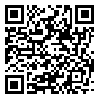BibTeX | RIS | EndNote | Medlars | ProCite | Reference Manager | RefWorks
Send citation to:
URL: http://jpcp.uswr.ac.ir/article-1-338-en.html

 , Seyed Mohammad Kalantarkousheh1
, Seyed Mohammad Kalantarkousheh1 
 , Younes Doostian2
, Younes Doostian2 
 , Omid Massah *3
, Omid Massah *3 
 , Hamid Reza Varmazyar4
, Hamid Reza Varmazyar4 
 , Moslem Arian5
, Moslem Arian5 

2- Substance Abuse and Dependence Research Center, University of Social Welfare and Rehabilitation Sciences, Tehran, Iran.
3- Substance Abuse and Dependence Research Center, University of Social Welfare and Rehabilitation Sciences, Tehran, Iran ,
4- National Medical Academy Of Iran, Tehran, Iran.
5- University of Social Welfare and Rehabilitation Sciences, Tehran, Iran
Objective: This study was conducted to investigate the association between Islamic lifestyle and addiction potential among adolescents residing in Eslamshahr City, Iran.
Methods: This was a cross sectional study. The statistical population consisted of all students attending public high schools during 2012-2013 academic year in Eslamshahr City. The sample size was 211, who were selected through multi-stage cluster sampling method. The Islamic lifestyle and addiction potential questionnaires were used to collect data.
Results: The Pearson correlation coefficient showed significant and inverse associations between the components of Islamic lifestyle and addiction potential, except for ‘timeliness’ (P < 0.01).
Conclusion: Those adopting an Islamic lifestyle are less prone to substance abuse.
Received: 2016/08/21 | Accepted: 2016/11/11 | Published: 2017/01/1
| Rights and permissions | |
 |
This work is licensed under a Creative Commons Attribution-NonCommercial 4.0 International License. |





